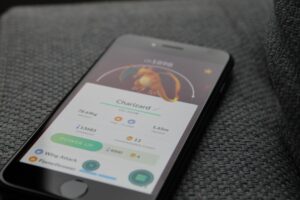So it’s time to upgrade to a brand-new smartphone, but all those technical terms are leaving you more confused than ever? Here’s our guide to decoding tech terms and seeing what they really mean.
3G, 4G & LTE
Third and fourth generation of mobile technology. It determines the speed of data your phone receives. LTE is a type of 4G wireless broadband technology. So if your phone is 4G or LTE-enabled, you’ll be able to connect to Vodacom’s super-fast LTE data network. Just remember, if you’re using a LTE-enabled device for the first time, the speeds are much faster so you are likely to use data more quickly.
Dual-core, quad-core and octa-core
If your smartphone has a dual-core processor, it means it has two units that function together, making it twice as fast as a single processing unit. Even more advanced, a quad-core processing chip has four such processing units, and an octa-core has eight, so expect lightning-fast speed.
GB
Gigabytes refer to the storage space on your smartphone. If you like to take, and store, high-quality videos and high-resolution images and have loads of music on your phone, an 8GB smartphone may be too small for you. The new iPhone 6S is available with16GB, 64GB and a whopping 128GB options. Some smartphones allow you to expand your storage with a microSD card.
GHz vs RAM
Gigahertz refers to the power of your phone. It determines the speed at which your phone works. For comparison, the flagship Samsung Galaxy S6 Edge has a 1.5Ghz processor, while their great-value option, the Samsung Galaxy Core Prime, has a 1.2GHz processor.
RAM is the system of memory your phone uses. Basically, the more RAM your phone has, the faster it will be able to run apps – great if you love to switch between several different apps.
HDR
This advanced camera technology, which stands for High Dynamic Range, captures three images at different exposures, then combines them to create the optimal photo that best reflects real life.
IMEI
This number is the International Mobile Equipment Identity, used to identify your phone if it has been lost or stolen.
Megapixel
You’ll see this when referring to your smartphone’s camera’s capturing capabilities. Taking great photos doesn’t only require a high MP camera, but also using the right settings. The new Sony Xperia Z5 has a whopping 23MP camera, while the Xperia C3 has a very serviceable 8MP camera.
If you love to take selfies, the resolution of the front camera will also be important to you. Anything from 2MP to 5MP is standard.
Remember that the higher the resolution of any photos or videos you upload to social media, the more data it will consume to upload.
Learn more about getting the most out of your smartphone camera here.
Operating system
If you use an iPhone, you’ll use Apple’s iOS as your operating system. If you’re on an Android phone, you’ll use the operating system designed by Google.
Apps are not interchangeable from the Apple App store and Google Play, so consider carefully before switching. The latest Android OS is called Marshmallow (6.0).
Other operating systems are BlackBerry OS and Windows Phone.
PUK
The code required when a phone is locked after entering an incorrect PIN code.
SIM
The Subscriber Identity Module refers to the chip that identifies the cellphone number and account to the network.
Super AMOLED
This refers to touchscreens where the technology that detects the touch is part of the screen, and not on top of it. The display is clear and bright. The Samsung Galaxy S6 is a good example of a smartphone that uses this tech.
Wi-Fi
Wireless connectivity. You’ll often find high-speed wireless in public spaces like buses, restaurants and parks these days. Connecting to Wi-Fi may require a password.
Save data by setting your phone to connect to Wi-Fi when it’s available, and by only allowing updates when your phone is on Wi-Fi, not using your data.



